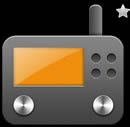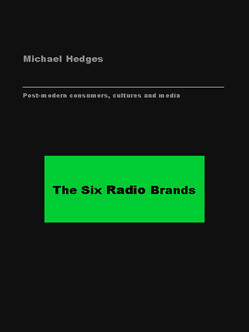ftm Radio Page - April 17, 2015
Getting To Know Where People Live Is No Mean Feat
 Nothing affects a media environment more than dramatic, breaking news. Media outlets offer details, often non-stop, and, also notable, escape from agonising subjects. People universally want to know what’s going on where they live. Leading edge outlets keep this firmly in mind.
Nothing affects a media environment more than dramatic, breaking news. Media outlets offer details, often non-stop, and, also notable, escape from agonising subjects. People universally want to know what’s going on where they live. Leading edge outlets keep this firmly in mind.
Getting more, or less, from digital transition
not thought through
The end of FM broadcasting in Norway is nigh. The official word has come down and national FM networks will be silenced in 2017, replaced by national DAB multiplexes. Digital coverage has reached 99% for radio channels of public broadcaster NRK and 90% for national commercial channels, the leading criteria for FM switch-off.
“Digitization of radio opens up much greater diversity,” said Culture Minister Thorhild Widvey in a press statement (April 16). “While the FM network only had room for five nationwide channels, DAB already offers 22 nationwide channels with room for nearly twenty more.” Minister Widvey also noted FM transmission costs are eight times higher than DAB transmission.
Some in Norway are less than thrilled. “The rest of the world has come to realize that DAB is an outdated technology, but Norway is going to introduce this by force,” said ICT support group IKT Norge secretary general Per Morten Hoff, quoted by nettavisen.no (April 17). “Most technologists have long seen that the future of radio is distribution via cellular networks, WiFi and satellite, all based on IP technology. Why consumers and radio stations invest many billions in new equipment is a riddle when a completely new technology is about to take over.” (See more about digital radio here)
Others see a related but different issue: Swedes. FM shut-off “means several million tourists will not be able to hear Norway’s national radio,” said local radio association (NLR) chairman Svein Larsen. “Plus we will be getting much more Swedish radio, like there was 30 or 40 years ago. Swedish radio now covers half of Norway. This type of effect they have not thought through.”
But then in neighbor Sweden some broadcasters are howling at a report from the government’s financial watchdog pouring very cold water on further DAB development. “Economic estimates… show that it is doubtful whether the investment can be profitable even after 50 years with the plan that exists,” said the National Audit Office (NAO), quoted by dagensmedia.se (April 14). “It appears reasonable to keep the FM network where all listeners, regardless of financial means, can continue to listen to the radio.” The Swedish government, which has more or less supported digital radio switch-over between 2022 and 2024, "has allowed the radio industry to define problem,” said the agency.
“I think they’re completely off their bicycles,” said MTG Radio CEO Chris Modig. “It is completely preposterous. What if we had thought that was when it came to transitions between GSM, 3G and 4G? The National Audit Office would oppose 4G because people needed to buy new cellphones.”
“It feels like the Soviet Union in the 1950s,” said SBS Discovery Radio CEO Staffan Rosell, “when no one believed people would like to have more than one choice.”
Clean image cited for ad revenue boost
challenges remain
A year on year jump in Hungarian ad revenues, reported in March, was met with obligatory analysis from all quarters of country’s media. After five years of steady declines estimated 2014 ad revenues rose 7.77% to HUF 189 billion (roughly €630 million). Media watchers noted World Cup football, elections, digital transition as well as increased State spending.
And some took credit. “Since the formation of this association the growth rate has jumped,” said radio broadcasters association (RAME) president Turi Arpad, quoted by vg.hu (April 9). Hungary’s radio market, he said, has been “clean” in recent years and the RAME was formed early in 2013 to “effectively shape the sector’s image.” Hungarian government actions against national and local radio broadcasters beginning in 2009 attracted international attention chasing major advertisers from the market. Estimated radio ad revenues increased 5.8% year on year to HUF 9.3 billion, roughly €31 million, and 4.9% of total estimated ad revenues. (See more about media in Hungary here)
Challenges loom large for Hungary’s radio broadcasters. “Conventional platforms are going away,” he added. Mobile phone operators are lowering data-plan rates and offering streaming audio services to attract customers.
Radio Page week ending April 10, 2015
radio in France, public broadcasting, Radio France, radio in Sweden, Sveriges Radio, Metropol, social media, P5 STHLM
Radio Page week ending April 3, 2015
digital radio, DAB, DAB+, radio in the UK, radio in the Netherlands, radio in Austria
Radio Page week ending March 27, 2015
radio in the Netherlands, BNR Nieuwsradio, STER, sales-houses, radio in France, Radio France, public broadcasting
Radio Page week ending March 20, 2015
radio in Russia, Like FM, social media, Gazprom Media, radio in Poland, Eurozet, Radio Zet, RadioDays Europe
Radio Page week ending March 13, 2015
radio in Germany, MA Radio 2015/I, Antenne Bayern, Radio NRW, WDR, BR, Energy Munich, SWR, Radio Regenbogen, EinsLive, Radio PSR, radio in Bulgaria, audience measurement, Nielsen Admosphere
Radio Page week ending March 6, 2015
radio in Sweden, public radio, SR, radio in Italy, RCS Media Group, Radio 105, Radio Monte Carlo, Virgin Radio
Radio Page week ending February 27, 2015
radio in Italy, Eurisko GfK Radiomonitor, radio audience, radio advertising, RTL 102.5, RDS, Radio 105, Radio 24, RAI, radio in Germany, AG.MA, radio in Switzerland, digital radio, radio reception, radio in Norway, digital transition, NKOM
Radio Page week ending February 20, 2015
radio in the Czech Republic, public radio, CRo Plus, FM distribution, radio in Crimea, radio in Russia, radio in Ukraine, Gazprom Media
Recently added radio audience figures and resources
- France - Greater Paris Radio Audience (April 2015)
national and local channels, market share, trend - Portugal - Major Media - Radio Broadcasting (April 2015)
public and private broadcasting companies, channels, management, platforms, audience estimates - France - National Radio Audience (April 2015)
national channels, sectors, market share, reach/TSL - FYR Macedonia - Major Media - Radio Broadcasting (April 2015)
public and private stations, management - Malta - Major Media - Radio Broadcasting (March 2015)
public, private, educational and religious stations, ownership, management, platforms, audience reach - Germany - Radio Audience (March 2015)
leading stations, audience trend, daily reach - Italy - Major Media - Radio Broadcasting (February 2015)
public and private broadcasting companies, channels, audience reach/share, management - UK - National Radio Audience (February 2015)
market share, trend, sectors - UK - London Radio Audience (February 2015)
market share, trend - UK - National Radio Audience (February 2015)
BBC/commercial 'gap' - Switzerland - Radio listening by region (February 2015)
public and private sectors, penetration, time spent listening - Switzerland - French region Radio Audience (February 2015)
share, trend - Switzerland - Swiss-German region Radio Audience (February 2015)
share, trend - Switzerland - Italian region Radio Audience (February 2015)
share, trend - Bosnia/Herzegovina - Major Media - Radio Broadcasting (January 2015)
public and private broadcasters, management, descriptions, regulator, broadcaster association - Albania - Major Media - Radio Broadcasting (January 2015)
public and private radio channels, national, regional, religious and community stations - Turkey - Major Media - Radio Broadcasting (January 2015)
ownership, management, program formats, platforms, audience estimates
More Resources
Also see ftm Knowledge
Europe's Radio - Western Europe
Opportunity meets tradition in Western Europe's radio broadcasting. Change has come fast and yet oh, so slowly. This ftm Knowledge file contains material and resources on public and private radio broadcasting in Austria, Belgium, France, Germany, Liechtenstein, Netherlands and Switzerland. 244 pages. Resources. PDF (September 2013)
Europe’s Radio – Eastern Europe
Eastern Europe’s radio writes new rules. In fact, most everything about radio in this region is new... and changes often. The ftm Knowledge file reports on Belarus, Bulgaria, Czech Republic, Hungary, Moldova, Poland, Romania, Russia, Slovakia and Ukraine. 159 pages PDF (April 2013)
Europe’s Radio – Northern Europe
Northern Europe’s radio has a very digital sound. And change is in the air. Economic challenges abound for both public and commercial broadcasters. The ftm Knowledge file reports on Denmark, Estonia, Finland, Iceland, Ireland, Latvia, Lithuania, Norway, Sweden and the UK. 144 pages PDF includes Resources (November 2012)
Digital Radio - Possibilities and Probabilities
Digital radio has many platforms. From broadcast platforms to internet radio and rapidly emerging smartphone platforms, listeners and broadcasters have choices galore and decisions to make. Some regulators have made up their minds, others not, some hedging their bets. This ftm Knowledge file details the possibilities for digital broadcasting and the probabilities for success. Includes Resources 149 pages PDF (August 2012)
Europe's Radio - Southern Europe
Radio broadcasting in southern Europe ranges from highly developed to developing highly. Italian, Spanish and Portuguese radio is unique, creative and very popular. Radio in Croatia, Serbia and Greece has had ups and downs. The ftm Knowledge file includes Resources. 74 pages PDF (May 2012)
Order hereBecome an ftm Individual or Corporate Member and receive Knowledge files at no charge. JOIN HERE!
ftm Knowledge files are available to non-Members at €19 each.

The Six Radio Brands is about the uniquely European development of radio brands. Competition among broadcasters - and certainly between the public and commercial sectors - gives radio in Europe a rich dynamic. As consumers become more media-literate and demand more attachment broadcasters find target markets illusive. 100 pages. 2004 Available at no charge to ftm Members, €49 for others. Email for more information |